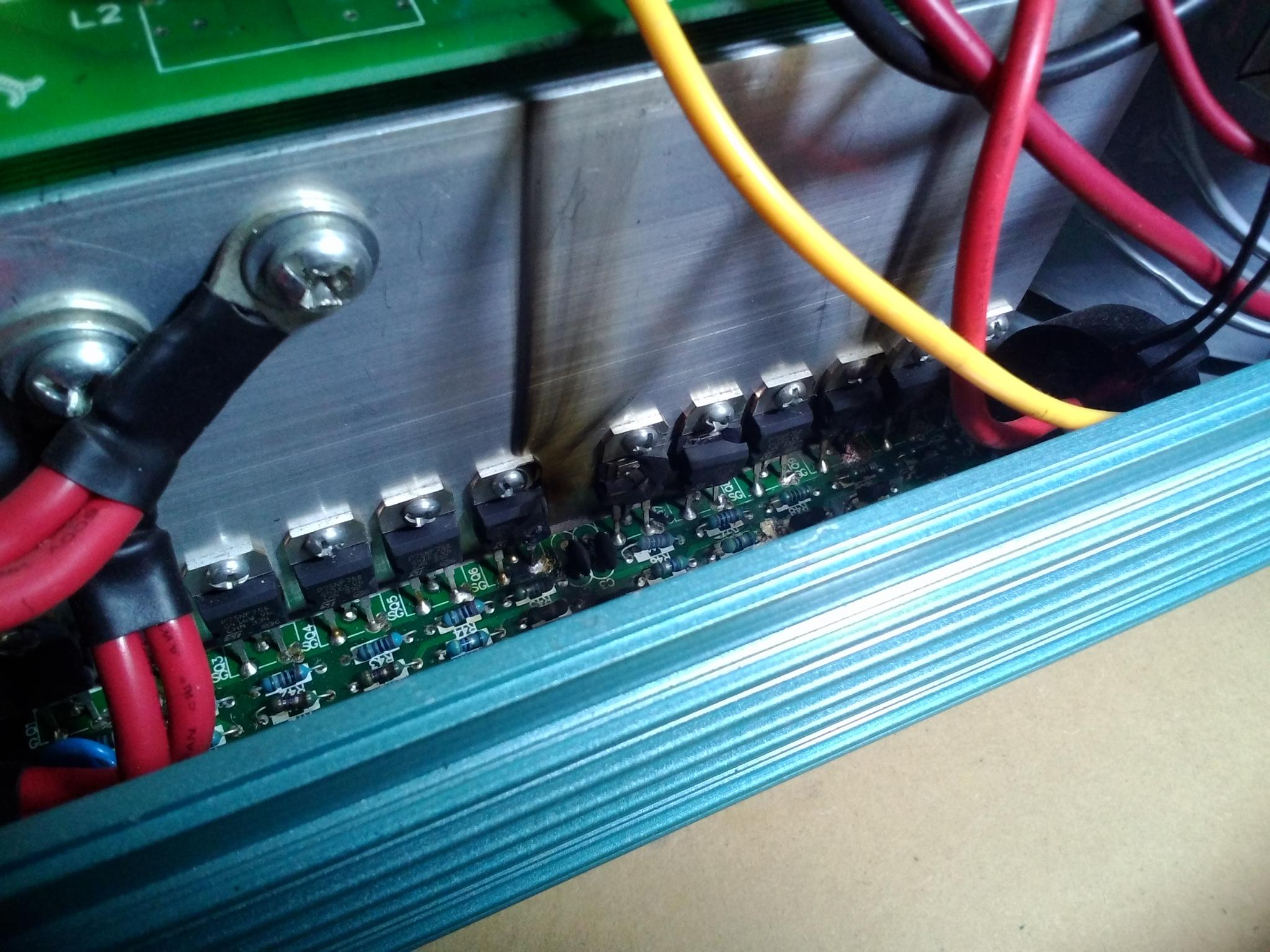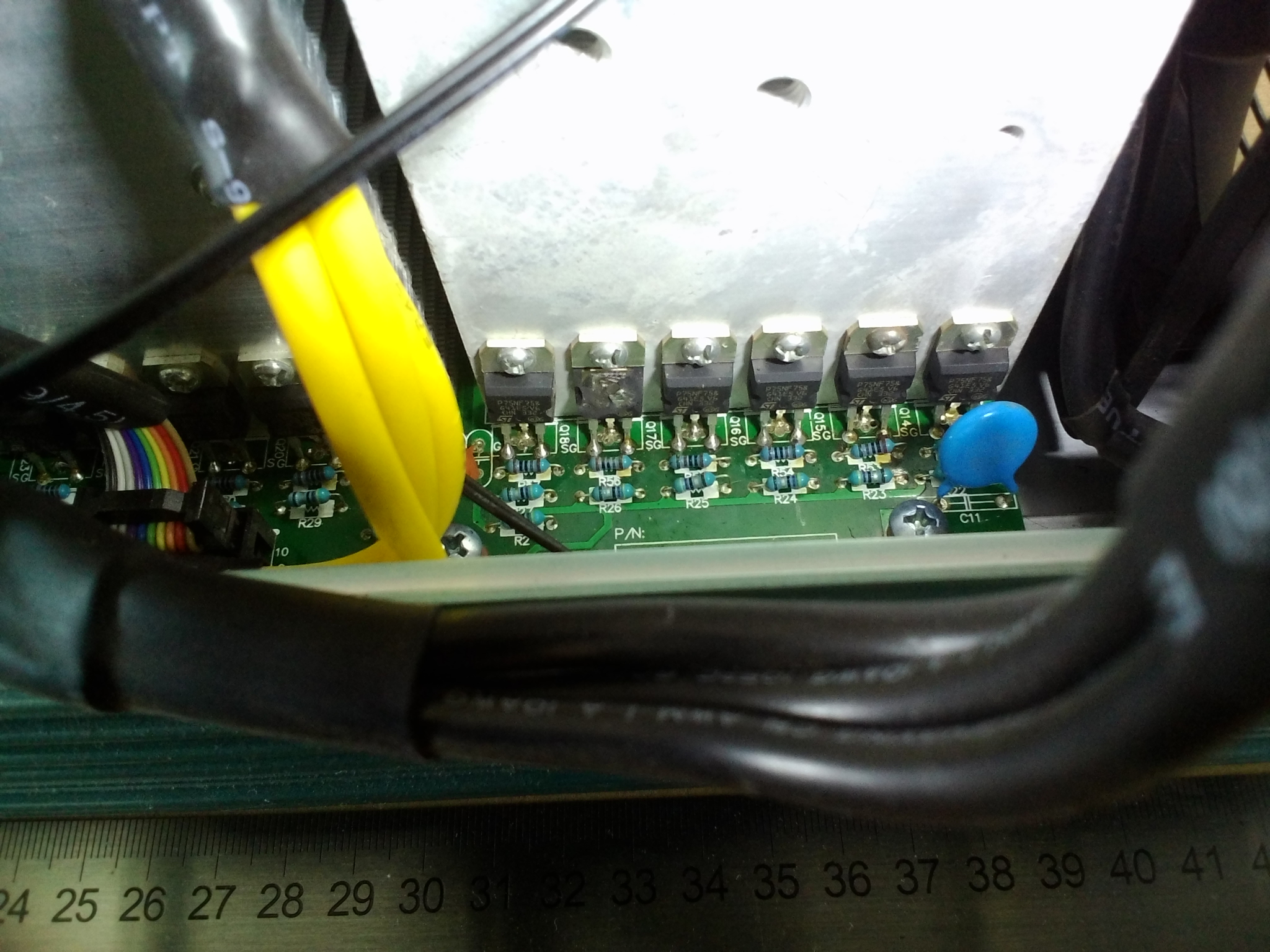Hi All,
The Better-Half had the electric lawn mower out the other day and 15mins later came to me in the garden to advise it (24v 5000W LF) had suddenly stopped and there was a puff of smoke and a burnt smell coming from the inverter...

The pictures say it all, 15 months after I got it...



It looks to me like that middle fet on the + side of the Main Board burned up and popped the 2 fets to the right, as well as the 1 fet on the - side.
The mower is 1100W and admittedly at start-up it would invoke the overload alarm for one single beep and then power on without issue. All other appliances (water pump, kettle, mulcher, Laptops, power tools, etc) always worked without issue. The inverter only receives fairly limited part-time use, manually switched on/off as needed, because lights, fridge/freezer, and small appliances (Laptops, Radios, etc) all run direct from the DC charge controller.
So any ideas out there what went wrong? I'm admittedly ignorant of proper inverter etiquette... e.g. could cold-starting it at 6:30am most mornings to boil my tea have contributed to it's early demise? I recall you mentioning OZ that putting fuses (like NT00/NT1?) between your inverter/batteries can help save your fets under certain circumstances too. Admittedly I only have 2 x high voltage DC isolator switches on the positive side. I'm using 4 gauge power cable on all 4 terminals. Pro's/Con's of using 2 vs 4 terminals?
ANY advice that would help me to prevent future such incidents would be greatly appreciated!!!
Thanks to OTW, I'm now in touch with Cher for replacement boards. She's confirming if the Main Board with detachable fets will work in my inverter (would make future repairs quicker/easier/cheaper). I notice there's about 3 wires to solder to the Control Board, beyond that, anything I should look out for/do specifically?
Plus I'm finally biting the bullet and ordering an 8000W unit while I'm at it. I've asked Cher to ensure I get a good'un (i.e. 2 x 5000W Toroid's - thanks OZ

). Is there anything else I should be looking out for/requesting? Can anybody confirm if the current boards do indeed have a better/lower idle current than the old boards? And have they also fixed/raised the high voltage alarm level?
PS: So the 5000W is now destined for the bore and I'll wire a 24v Timer into the on/off switch so it pumps autogomagically without me having to make a trip down the hill...

Thanks all!